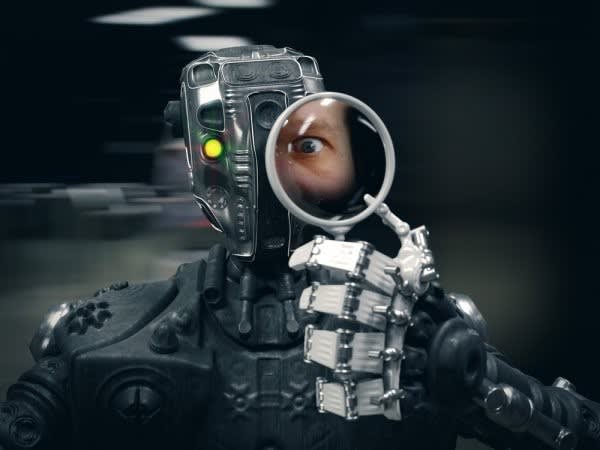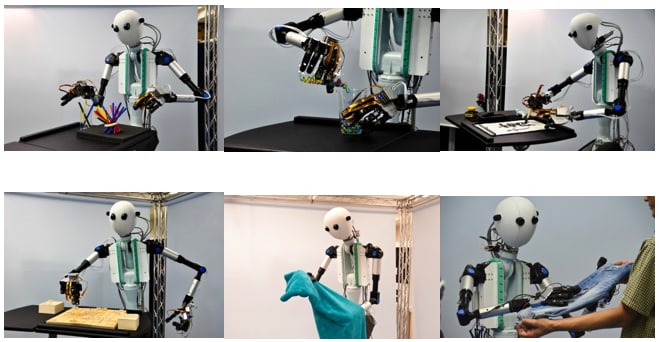Telexistence - Your Life In A Robotic Body
Follow articleHow do you feel about this article? Help us to provide better content for you.
Thank you! Your feedback has been received.
There was a problem submitting your feedback, please try again later.
What do you think of this article?
I have always had a fascination for robots, to be fair, that usually pertains to the ones you find in science fiction movies, C3PO, R2D2, Robbie the Robot and the giant Jaeger robots that featured in the Pacific Rim movie. Robots always excite the child in me who, many years ago, loved playing with his collection of battery-powered walking, laser shooting, parent annoying toy robots, great fun!
Suffice to say, when I read about the anthropomorphic robot, the Telesar V, in Forbes, I was somewhat excited, to say the least! A new start-up company called Telexistence, based in Japan, are developing a mind-blowing robotics system which was devised by Dr Susumu Tachi, in 1980.
Image courtesy of Tachilabs
What is Telexistence?
Do you remember the movies Avatar and Surrogates? The main characters in both of those movies utilised a remotely controlled body to interact with their environments, whilst one was biological and one robotic, the theory is still the same, a human, in a remote location controlled their respective surrogate body. What Dr Tachi and his team have been working on is a system where the user can have all the sensations of self-presence in the remote environment, via the interactions of their Telexistence form, whilst located anywhere in the world. With full haptic feedback and awareness, the remote form provides physical sensations to the user as if he or she was inside the robot itself. The implications of such a technology are simply mind-blowing!
About the Tech
The Telexistence anthropomorphic robot, the Telesar V, which is the latest in their journey of development, features 6 degrees of freedom (DOF) torso, 3 DOF head, 7 DOF arms and 15 DOF hands. A complex series of digital controlled motors facilitate the movement of the torso and limbs of the robot. Added to the mix are full HD stereoscopic camera eyes and stereo microphones placed on the side of the robots head and a speaker to allow for bi-directional communication. The visual system, speech and hearing is contained within a specially designed VR headset which is worn by the user and their projected movements are monitored using the OptiTrack motion-capture system, which is one of the systems often used by digital animators in movies.
As for the delicate movements of the hands, they are captured using two modified 5DT Glove 14s, which are designed to be used for motion capture and animation purposes, these provide 14 degrees of freedom. All of the user’s movements are then relayed to the Telesar V which replicates those various activities, and in turn what the robot experiences is relayed back to the user.
The Haptic Feedback System
The haptic system is comprised of 3 essential components, the haptic sensor, the haptic display and a processor. When an object is touched the haptic sensor monitors a series of information such as contact force, temperature and vibration. This force sensor measures the vector force and the processor determines, via the haptic display, how the 2 motor belt-driven mechanism will relay the relative sensation to the driver’s fingertips.
Image courtesy of Tachilabs
A microphone within the haptic system records the sound that is produced when an object is touched and the haptic display relays this sound as a vibration to the operator. A thermistor measures the surface temperature of an object in contact with the Telesar V’s fingers which is sent to the haptic display and then to the user’s hands via a Peltier device contained in the modified 5DT 14 gloves.
Future Implications?
The sheer extent of what could be achieved with this technology in the coming years is awe-inspiring. Can you imagine never having to commute to work, or take a plane to visit clients or friends on the other side of the world? Shift working would become a thing of the past as different employees from different time zones from around the world could empower 24hr working as their working day begins.
Perhaps you are elderly, or disabled and cannot move as deftly as you once did? Having access to a surrogate body could bring a new lease of life if you are less physically able, especially so if the interfaces developed included thought control perhaps? Maybe your job involves working in a dangerous environment? In a disaster situation, aid workers, emergency services, doctors etc. could be in the field without putting themselves in danger. The applications for military purposes are frightening to comprehend, the possibilities, it seems, appear endless.

There are other implications that seem rational to anticipate, immigration for the purpose of work and perhaps moving to live in an urban environment rich in employment would essentially become obsolete, the likes of this system could allow you to live wherever you please. Without a commute to work, perhaps you would gain more leisure time? It’s exhausting trying to conceptualize the myriad possibilities the likes of this technology could provide in the coming years.
Can you imagine climbing Everest without actually going there? Feeling the cold air on your skin, the roughness of the rocks under your fingers? I’ll leave you with that thought…
Read More about Telexistence Theory



